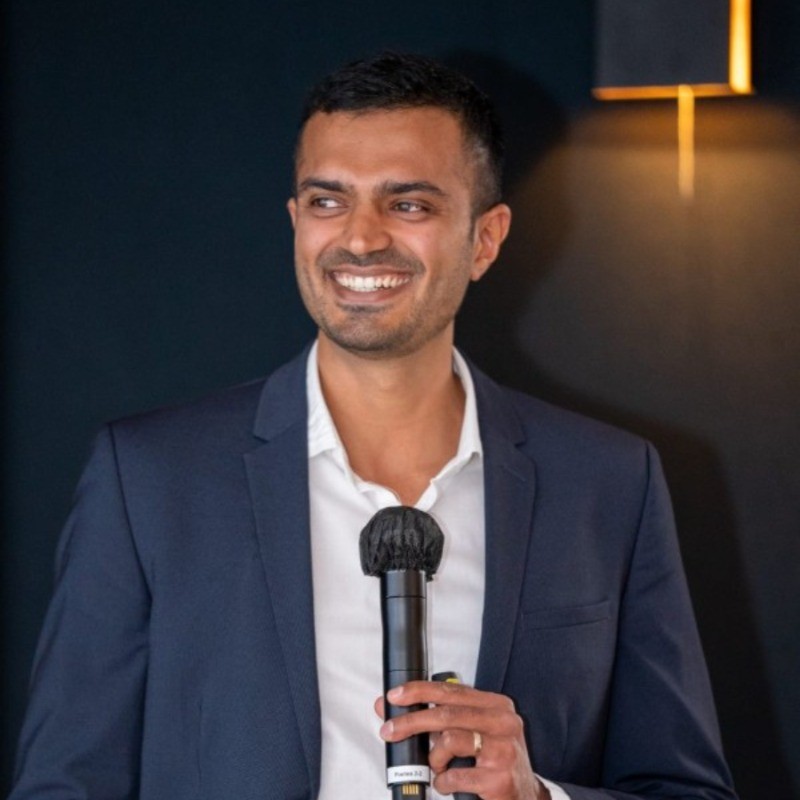
In this article, Rohit SALUNKE (ESSEC Business School, Grande Ecole Program – Master in Management, 2018-2021) shares his professional experience as Head of Data Modelling, leading advanced analytics, AI, and reporting solutions for a global investment organisation.
About the company
Tikehau Capital is a global alternative asset management group headquartered in Paris, France. Founded in 2004, it has become a multi-billion-euro investment house with expertise across private debt, real assets, private equity, and capital markets strategies. The company manages assets for institutional and private investors worldwide, relying on a long-term investment philosophy and strong entrepreneurial culture.
Tikehau Capital is listed on Euronext Paris and operates in over a dozen countries. Its diversified investment strategies and robust risk management have contributed to consistent growth and resilience across market cycles.
Logo of Tikehau Capital.

Source: Tikehau Capital.
About the role
As Head of Data Modelling, I was responsible for the strategic design, architecture, and delivery of the organisation’s enterprise-wide analytics infrastructure. My role bridged technology, quantitative modelling, and business strategy, ensuring that investment, risk, and operational teams had access to powerful, automated, and reliable data-driven tools. I oversaw the entire lifecycle of data and analytics projects—from ideation and design to deployment and continuous improvement—while directly coordinating with C-level executives and department heads to align technology solutions with organisational goals.
My Experience
My core responsibility was managing the architecture of our Databricks and PowerBI/Python reporting ecosystem, making it the central platform for the organisation’s portfolio analytics and operational reporting. I led the data strategy for our IT-Quant Cell, which served as a specialised unit delivering high-value analytics to investment and risk teams across multiple asset classes.
One of my most impactful projects was the full-stack development of an AI assistant for answering investor due diligence questionnaires (DDQs). This system combined Databricks Genie with open-webui, enabling internal teams to query complex datasets interactively. Additionally, I built NLP-based solutions to parse and extract information from unstructured documents—such as contracts, company filings, and financial statements—streamlining internal research and reporting workflows.
On the quantitative modelling front, I developed a bond valuation engine capable of pricing both individual securities and portfolios, as well as default probability models for issuers and securities. These tools allowed risk managers to proactively identify watchlist names, foresee covenant breaches, and anticipate coupon defaults. I also delivered full-stack stress testing and credit spread models for private debt and distressed debt portfolios, enabling portfolio managers to assess market scenarios and security-level risks with precision.
For cash flow management, I designed a forecasting engine tailored to private debt portfolios, integrating it with operational and client service functions to automate forecast reporting for investors. I also led the development of large-scale automated reporting solutions capable of generating PDF, PPTX, Word, and Excel outputs, meeting the regulatory and investor requirements of multiple jurisdictions.
Collaboration and Leadership
My role demanded close coordination with the CTO, COO, CFO, department heads, and technical leads to define priorities, allocate resources, and ensure delivery. I managed multi-departmental projects spanning Risk, Investment, Operations, Sales, and Finance, as well as asset class–specific initiatives in Private Debt and Equity, Fixed Income, CLOs, and Real Estate. This cross-functional exposure ensured our solutions were both technically sound and operationally relevant.
Beyond technical delivery, I implemented interactive dashboards for risk monitoring, fundraising, investor onboarding, and portfolio analytics—empowering top management, risk managers, and portfolio managers with actionable insights. I also provided mentorship to analysts and senior executives, guiding them through the adoption of new tools, processes, and workflows.
Required skills and knowledge
This role required deep expertise in data architecture (Databricks, SQL), advanced analytics (Python, NLP, quantitative finance), and visualisation (PowerBI). The ability to translate complex business needs into scalable, maintainable, and user-friendly systems was critical. Equally important were leadership and stakeholder management skills, enabling me to bring together technical and non-technical teams to achieve common objectives.
What I learned
In this position, I learned how to combine cutting-edge technology with robust quantitative frameworks to address the evolving demands of a global investment business. I developed a stronger appreciation for the balance between innovation and operational stability—ensuring that every model, dashboard, or AI system could be trusted by those making high-stakes decisions. Most importantly, I saw firsthand how data strategy, when aligned with business objectives, can transform portfolio monitoring, risk management, and investor communication.
Financial concepts related to my role
Credit spread modelling
Credit spread modelling is the process of estimating the additional yield or premium investors require to compensate for the credit risk of a bond or loan compared to a risk-free benchmark, typically government securities. This spread reflects the market’s perception of the issuer’s default risk, liquidity risk, and other factors affecting creditworthiness. In my role, I built sophisticated credit spread models that integrated multiple layers of data, including macroeconomic variables (such as interest rates, GDP growth, and inflation), issuer-specific fundamentals (like leverage ratios, profitability, and cash flow stability), and real-time market indicators (credit default swap spreads, bond prices, and trading volumes). These models enabled risk managers and portfolio managers to estimate fair value spreads, detect deviations from expected spreads, and identify mispriced securities. The ability to quantify and forecast credit spreads was critical for pricing, risk management, and strategic asset allocation across private debt and distressed debt portfolios.
Stress testing
Stress testing involves evaluating how a portfolio or individual securities would perform under severe but plausible adverse market conditions. It is a key risk management tool that helps identify vulnerabilities and potential losses in extreme scenarios, such as economic recessions, interest rate shocks, or credit market disruptions. I developed full-stack stress testing models that allowed users to apply shocks and scenario analyses both at the individual security level and the aggregated portfolio level. These models incorporated changes in key variables including interest rates, credit spreads, default rates, and macroeconomic indicators. By simulating various stress scenarios, investment and risk teams could assess the resilience of portfolios, anticipate potential covenant breaches or defaults, and plan mitigation strategies. This was especially important for private debt and special opportunities portfolios, where cash flows and valuations can be highly sensitive to changing market environments.
Default probability modelling
Default probability modelling quantifies the likelihood that an issuer or specific security will fail to meet its financial obligations within a defined time horizon. Accurate default prediction is fundamental to credit risk management, pricing, and portfolio construction. I designed models leveraging a combination of financial statement ratios (such as debt coverage, liquidity, and profitability metrics), market-based indicators (equity volatility, credit spreads), and qualitative industry or sector factors to generate forward-looking default probabilities. These models powered watchlists and early-warning systems, enabling portfolio managers to identify issuers at risk of covenant breaches, coupon defaults, or bankruptcy. By anticipating potential defaults, the investment teams could proactively adjust exposures, engage with issuers, or hedge positions, thereby reducing portfolio losses and improving overall risk-adjusted returns.
Why should I be interested in this post?
This post offers valuable insights for students and professionals keen on the intersection of quantitative finance, data architecture, and AI-driven solutions within the asset management industry. It illustrates how leadership in data modelling and technology can directly impact critical investment functions such as portfolio strategy, risk assessment, and investor communications. Understanding how sophisticated models and automated analytics tools are developed and deployed equips aspiring quants, data scientists, and financial engineers with a clearer picture of real-world applications beyond theory—highlighting the importance of cross-functional collaboration, scalable system design, and continuous innovation in today’s complex financial markets.
Related posts on the SimTrade blog
▶ All posts about Professional experiences
▶ The importance of data in finance to support small business managers
▶ My experience as a Data analyst in CEMEX
▶ My Internship Experience as a Data Analyst at Africa Verify in Casablanca
Useful resources
Academic articles
Duffie, D., & Singleton, K. J. (2012). Credit Risk: Pricing, Measurement, and Management (illustrated edition). Princeton, NJ: Princeton University Press.
Business resources
Tikehau Capital Solutions
Claessens S., Pazarbasioglu C., Laeven L., Dobler M., Valencia F., Nedelescu O., and Seal K. (2011) Crisis Management and Resolution: Early Lessons from the Financial Crisis, IMF
Preqin Alternative data platform
BlackRock eFront – Portfolio Management Solution
About the author
The article was written in August 2025 by Rohit SALUNKE (ESSEC Business School, Grande Ecole Program – Master in Management, 2018-2021).


